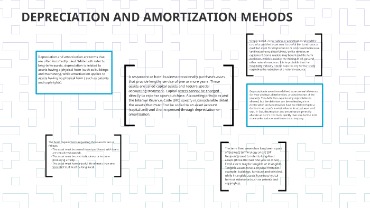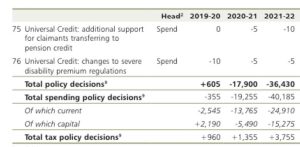Bookkeeping

We set startups up for fundrising success, and know how to work with the top VCs. The calculator below will help you estimate how much you’ll need to pay. Harvard Business Services, Inc. guarantees your annual Delaware Registered Agent Fee will remain fixed at $50 per company, per year, for the life of your company.
CALCULATING THE FRANCHISE TAX
The California franchise tax, for example, is equal to the larger of your California net income multiplied by the 8.84 percent tax rate or the $800 minimum tax. The minimum tax is due the first quarter of each accounting period and must be paid whether https://www.adprun.net/de-minimis-fringe-benefits/ your startup is active, inactive, operates at a loss or files a return for a short period of less than 12 months. The minimum tax is waived on newly formed or qualified corporations filing an initial return for their first taxable year.
- However, it’s essential to ensure you’re using a reputable and accurate calculator provided by a trusted source, such as the Delaware Division of Corporations or reputable financial websites.
- Total gross assets shall be those “total assets” reported on the US Form 1120, Schedule L (Federal Return) relative to the corporation’s fiscal year ending the calendar year of the report.
- This applies to whether you are operating a limited liability company (LLC), nonprofit, corporation or partnership.
- The franchise tax rate is $400 per million or portion of a million.
- Our annual Registered Agent Fee is $50 per year, and is due on the anniversary month of the formation of your company.
Special Considerations for Specific Entities
This agreement outlines the terms and conditions under which shares are sold and purchased. The par value of the preferred shares being transacted is usually specified here, along with other particulars like the issue price, number of shares, and payment terms. Tier 2 Delisting – In order to remove a Corporation from Tier 2 status please supply Franchise Tax with the delisting form the Corporation filed with the SEC https://www.simple-accounting.org/ removing them from the stock market. Since 1981, Harvard Business Services, Inc. has helped form 410,981 Delaware corporations and LLCs for people all over the world. The due date of your Delaware Franchise Tax payment varies, depending on your company type. Filing the Annual Franchise Tax Report involves providing the corporation’s file number and other relevant information to the Delaware Secretary of State.

A Hypothetical Spin on the Authorised Shares Method
Ask your accountant if you can use the assumed par value method to reduce your tax bill. Franchise taxes are generally due in arrears for the prior calendar year. The Delaware Franchise Tax for a corporation is based on your corporation type and the number of authorized shares your company has. The total cost of the corporation’s Delaware Franchise Tax consists of an annual report fee and the actual tax due.

It’s important for founders to remember that the Delaware Franchise Tax website defaults to the largest tax bill possible when you first log into the site. That’s because the state of Delaware doen’t know how many outstanding shares you have or what your asset base is until you fill out that information. If you’re not working with an accounting firm, you’ll need to total up your asset base and enter that number. Then you need to hit the “recalculate” button and wait while the system generates a new balance. The new number will very likely be lower than the original number you saw.

Once you’ve received your paperwork — which will include a filing number — and the calculations (if necessary) are complete, the next step is to pay the bill. As noted earlier in this blog, the process of making a tax payment is fairly simple. A $50 extra filing fee is charged by the Delaware Secretary of State for a Delaware corporation’s annual report. Let’s imagine a Delaware-incorporated company reported total gross assets of $1,000,000 on their federal taxes this year.
In order to retain their corporate existence and good standing status, all businesses that are incorporated in the state of Delaware are required to pay an annual franchise tax and file an annual report. No matter whether the company has done any business, made any profit or loss, opened a bank account, or submitted a federal tax return, the annual Franchise Tax is still required. A corporation with 5,000 authorized shares or less is considered a minimum stock corporation. The Delaware annual report fee is $50 and the tax is $175 for a total of $225 due per year. The tax calculation method and the amount of the Delaware franchise tax differ based on the type of business entity.
Additional support can be offered using the fixed cost. Businesses that owe $5,000 or more must pay estimated taxes in installments every three months. The HBS Blog offers insight on Delaware corporations and LLCs as well as information about entrepreneurs, startups and general business topics.
Since the tax payment process is simple, businesses are more likely to want to be incorporated in Delaware. Considering the payable tax deadlines and abiding by the requirements ensures businesses stay in good standing with the Delaware tax authorities. It’s vital for companies to be proactive in handling their franchise tax obligations to maintain a smooth and hassle-free tax filing experience. In certain cases, businesses may be required to make quarterly estimated tax payments.
If you decide to pay your Delaware Franchise Tax for a corporation with us over the phone, the annual report would need to be separately submitted to us by email, fax or mail. A corporation with 5,001 authorized shares or more is considered a maximum stock corporation. The annual report fee is $50 and the tax would be somewhere between $200 and $200,000 per year, as illustrated below. In addition to paying the franchise tax, businesses incorporated in Delaware must also file an annual report and pay a small filing fee.
